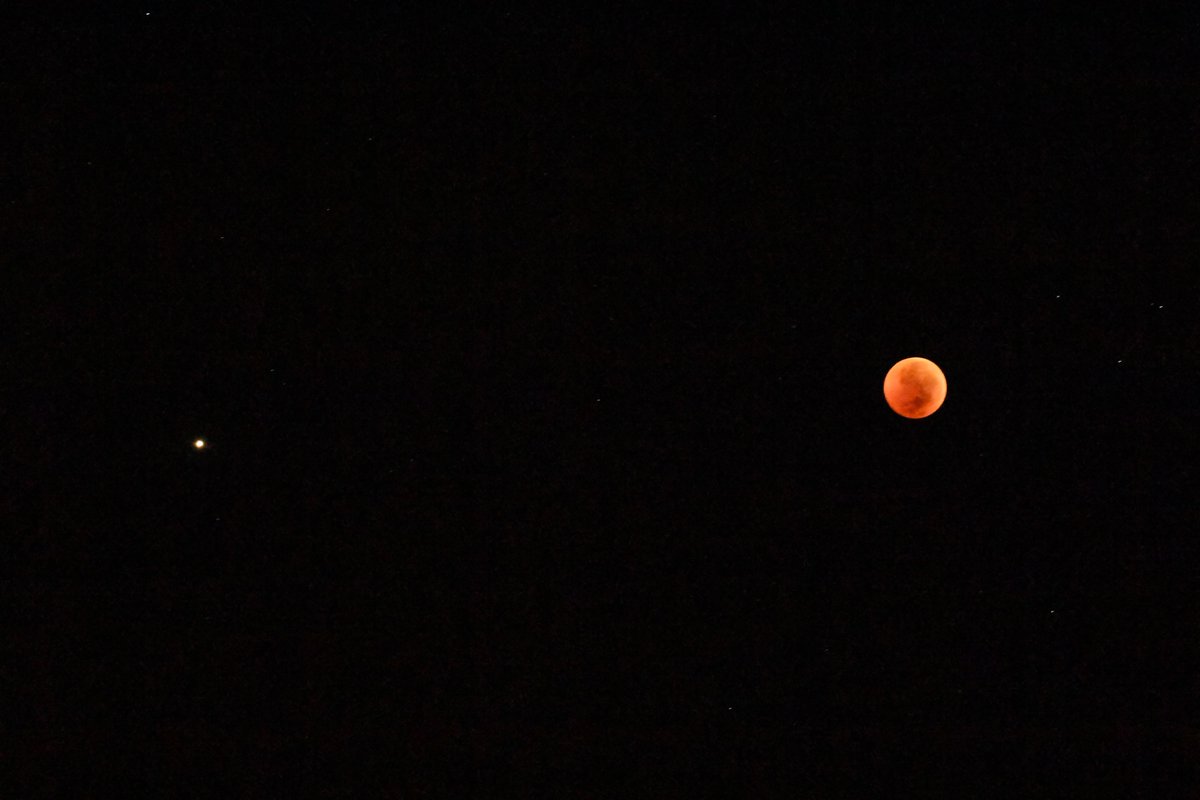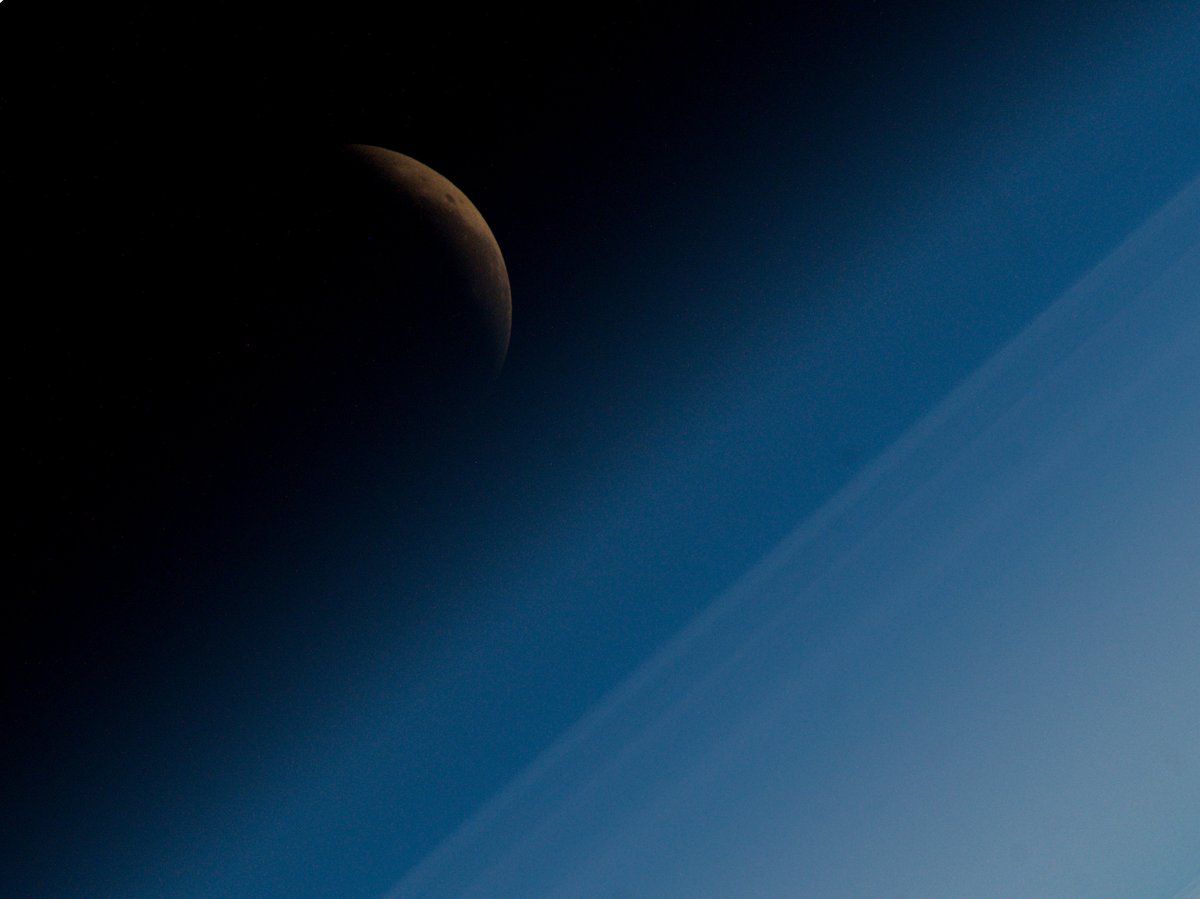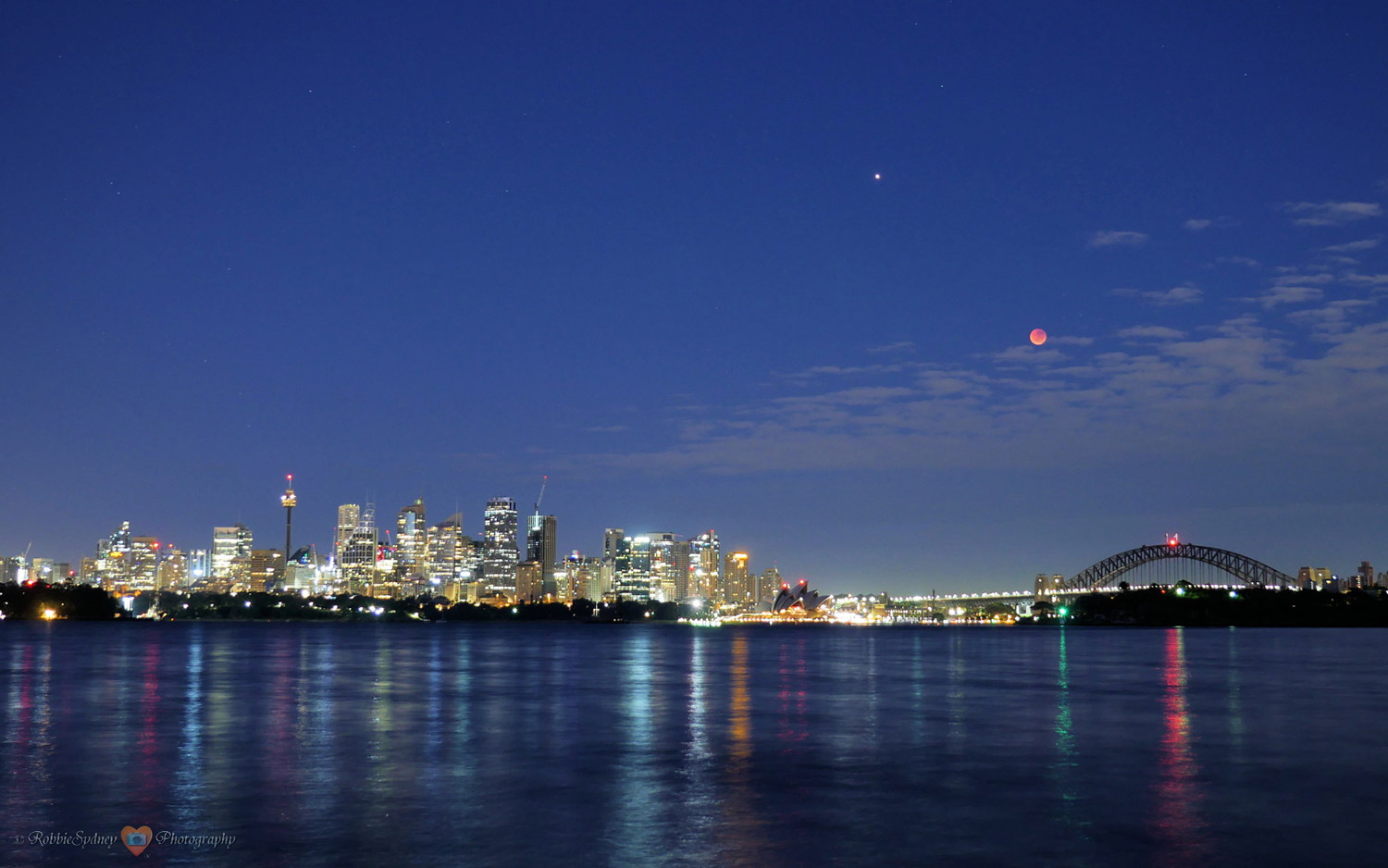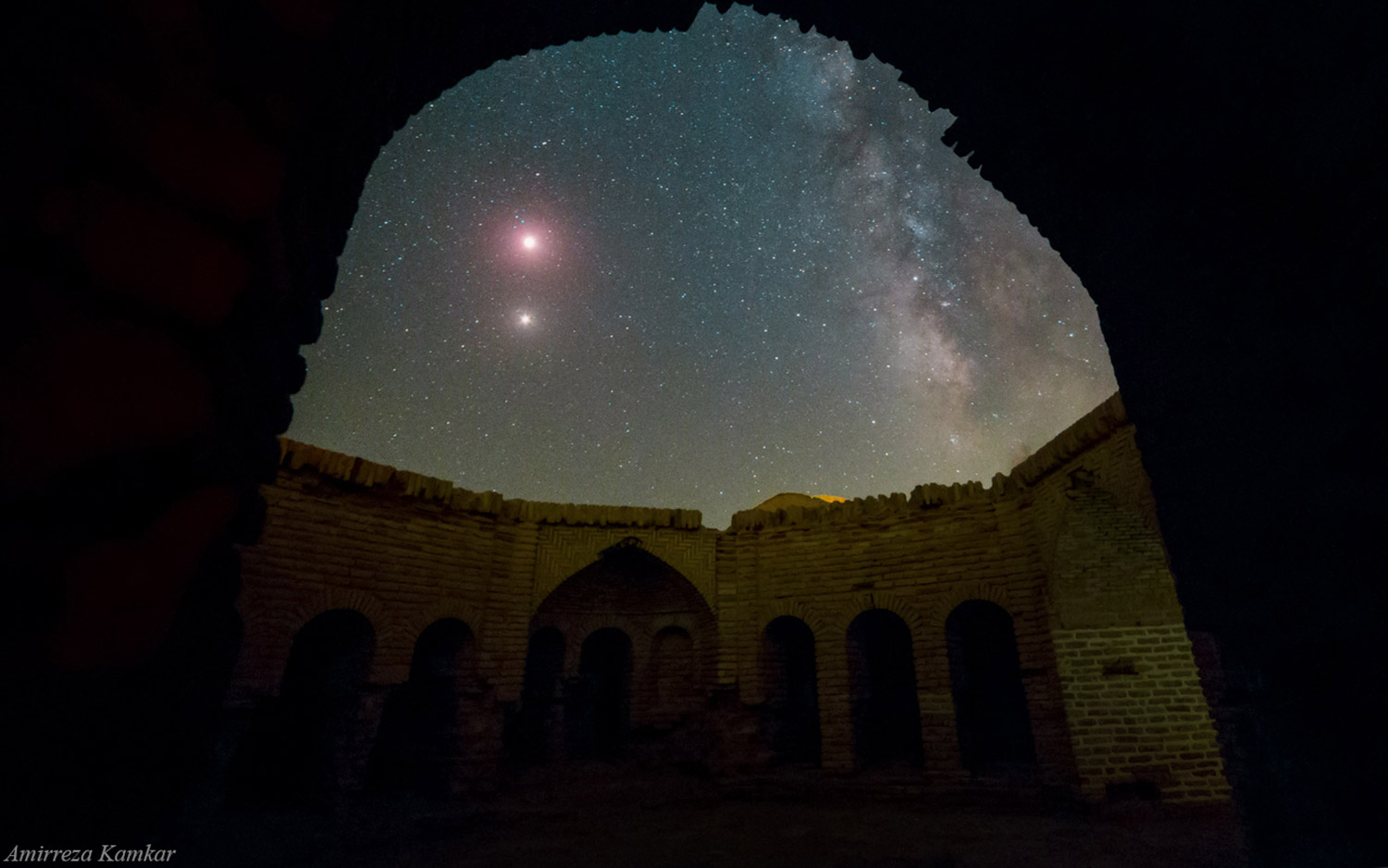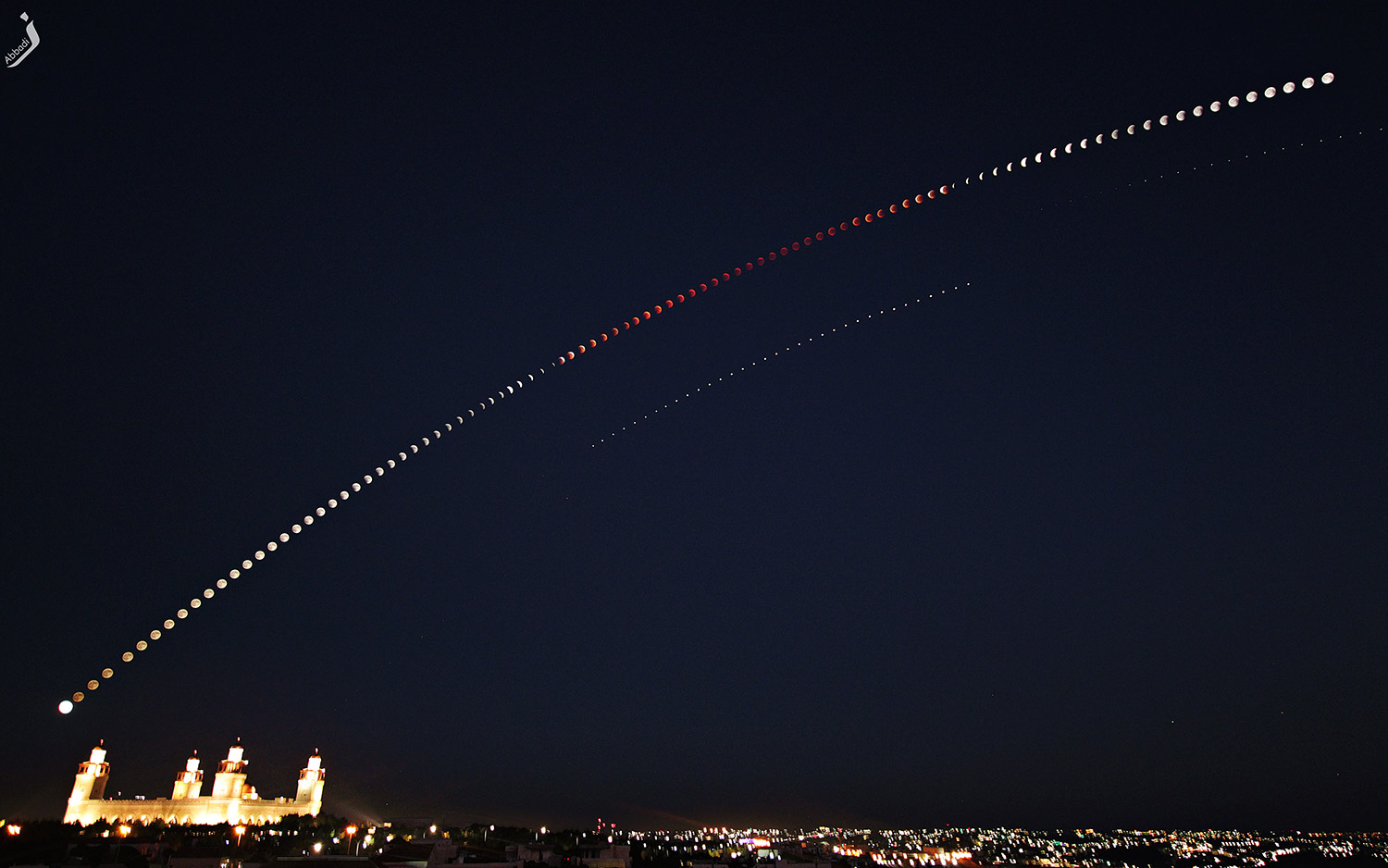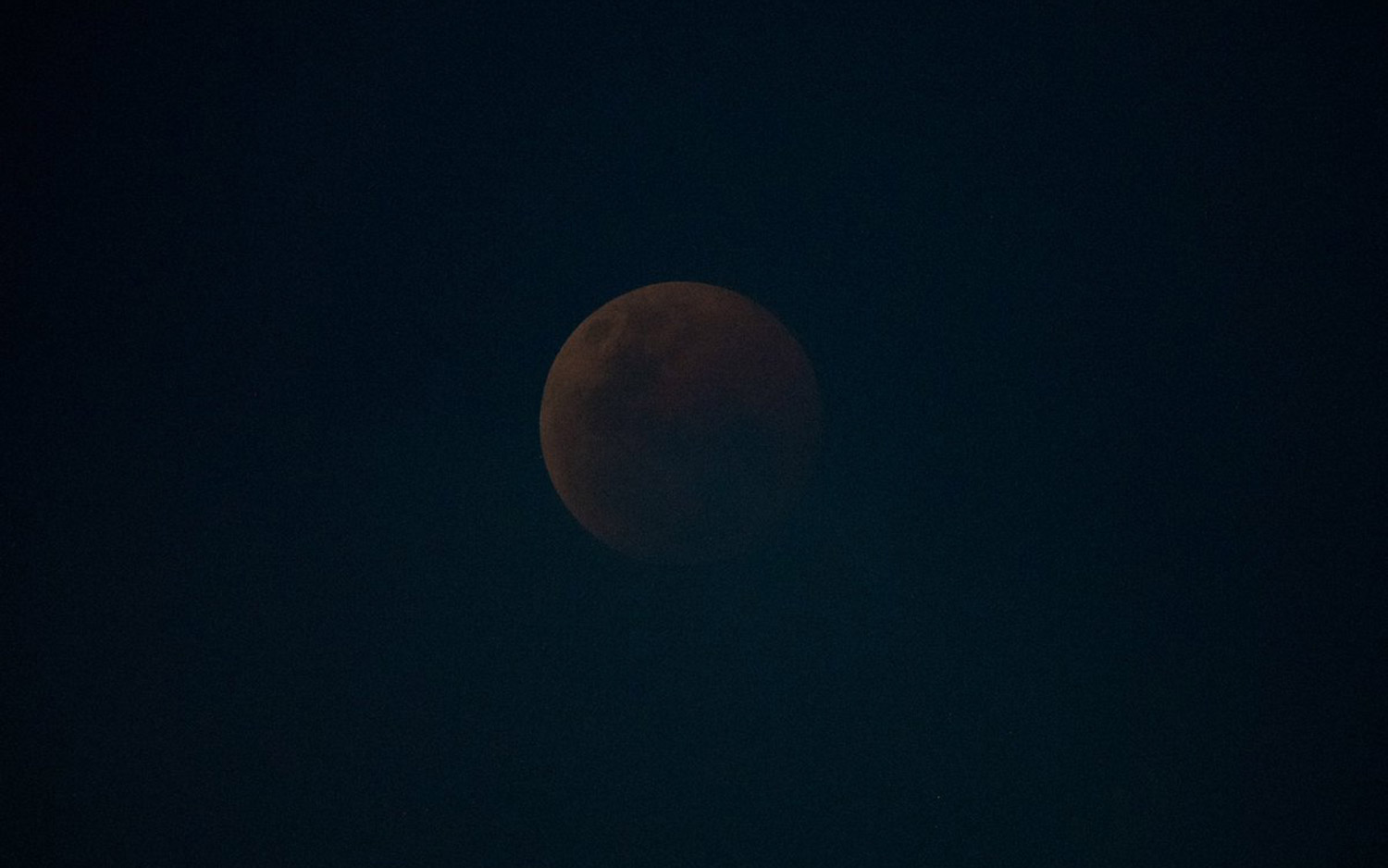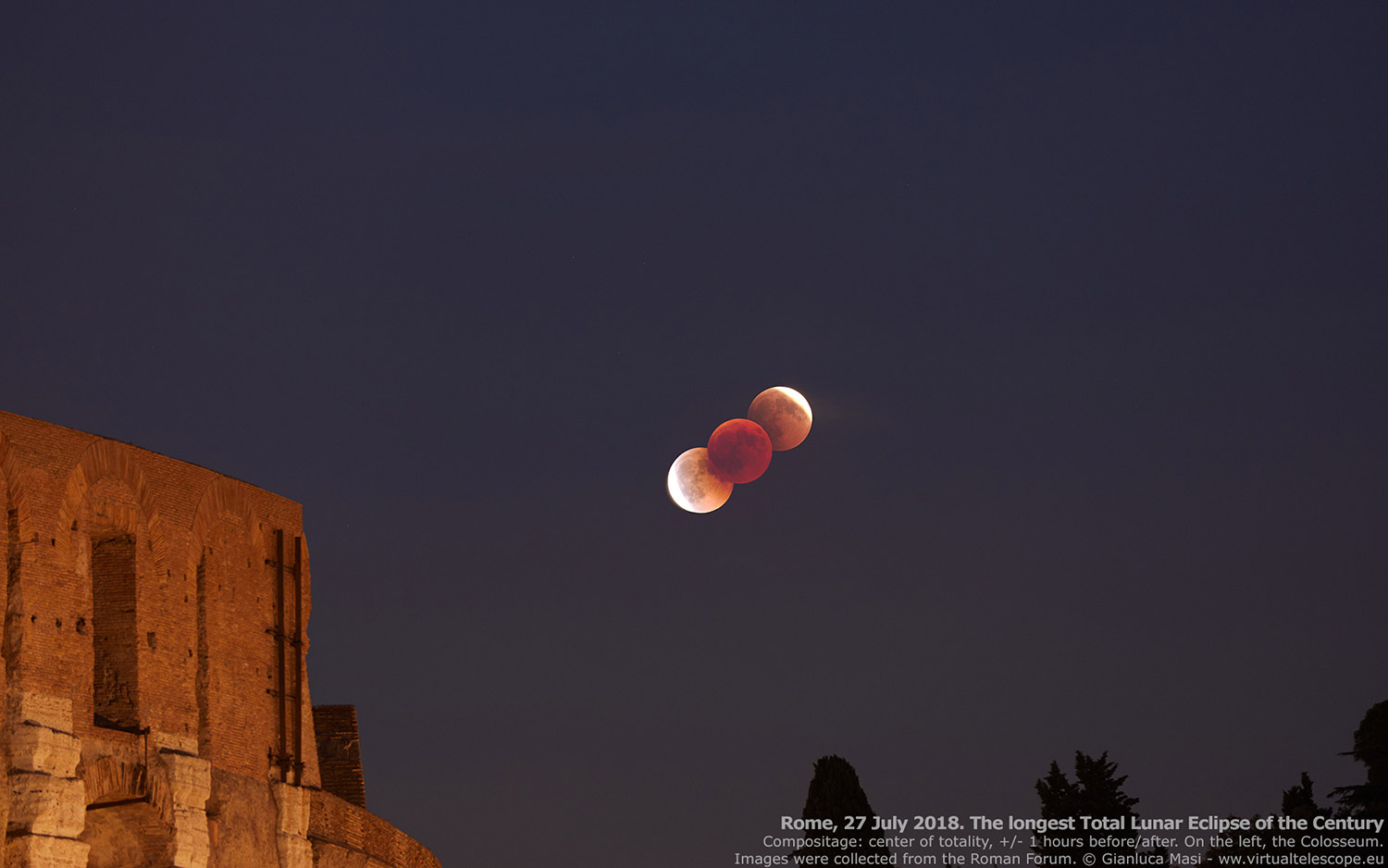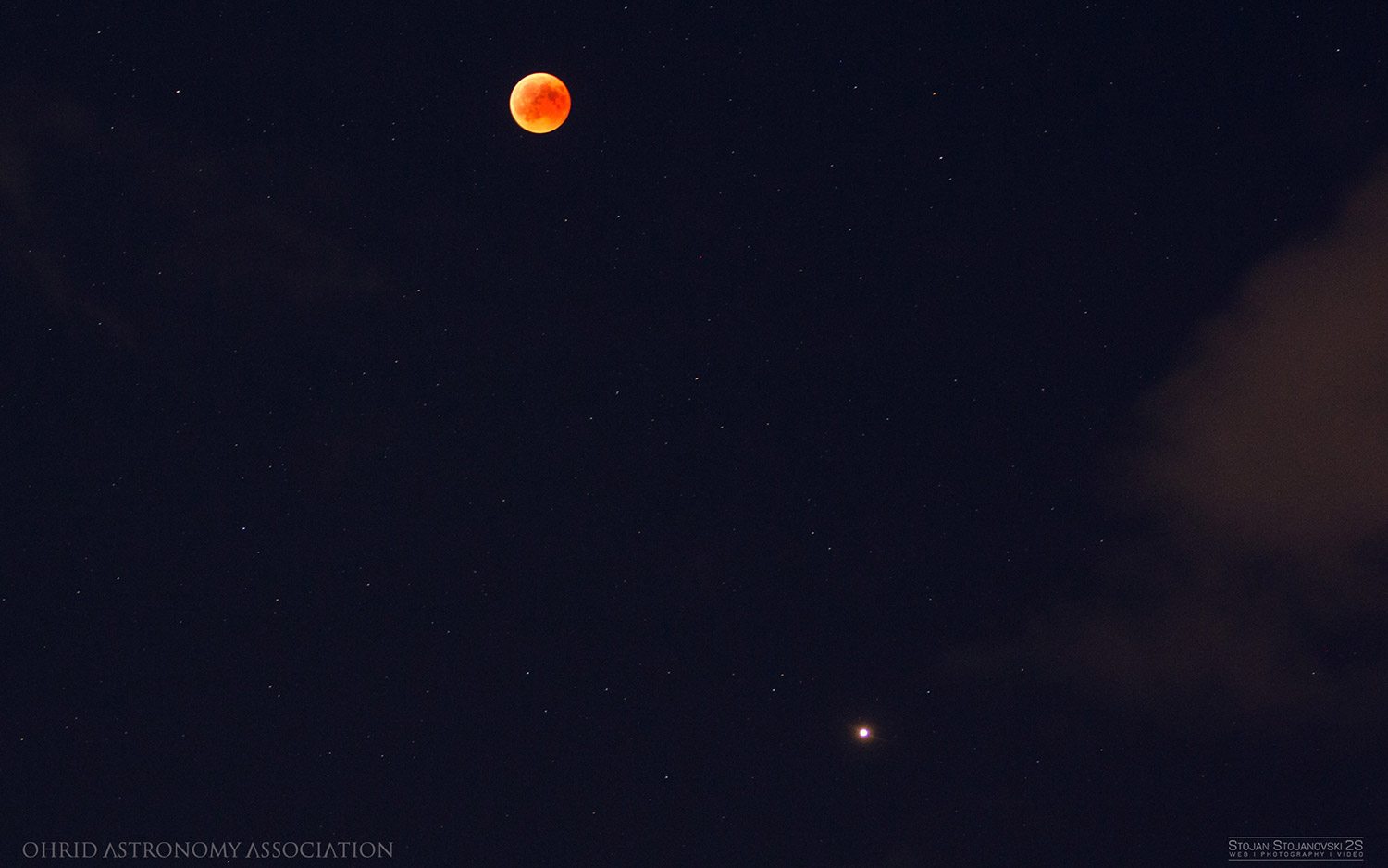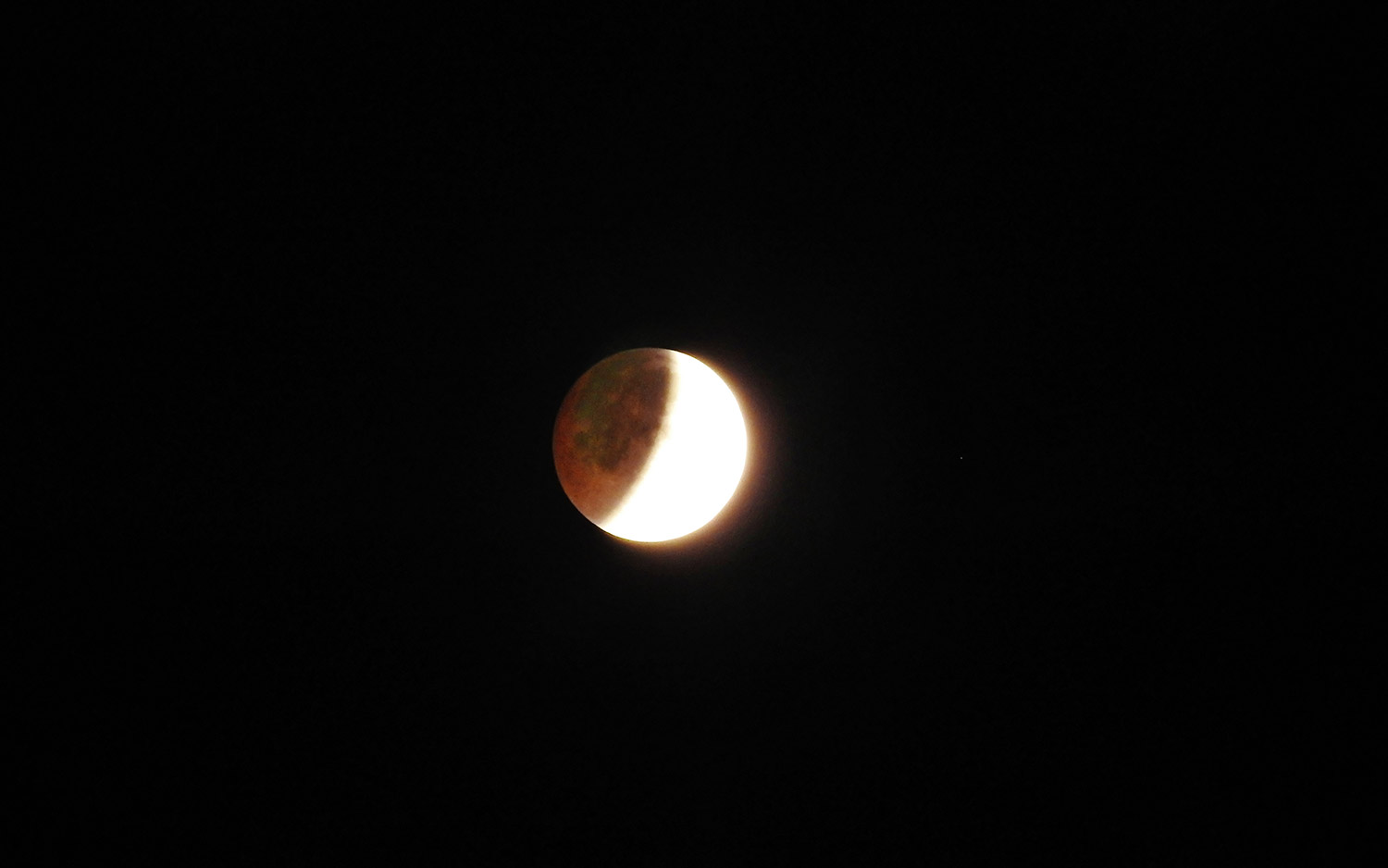Amazing Photos: The 'Blood Moon' Eclipse and Mars Opposition of July 27, 2018
The Longest Lunar Eclipse of the Century
The Red Planet met up with a blood-red moon during a total lunar eclipse on July 27, 2018. See photos of the splendidly color-coordinated celestial pair in this Space.com gallery! HERE: This timelapse photo of the total lunar eclipse was taken by Zaid Abbadi in the Dabouq neighborhood of Amman, Jordan.
The Moon and Mars
As the moon turned red, the Red Planet also put on a show, reaching opposition on July 27, 2018. During opposition, when Mars forms a straight line with Earth and the sun, the planet appears bigger and brighter than usual due to the angle at which sunlight reflects off its surface.
Lunar Eclipse From the International Space Station
Having nearly disappeared in the darkness of Earth's shadow during the total lunar eclipse on July 27, 2018, the moon looms above Earth's blue atmosphere in this photo by Russian cosmonaut Oleg Artemyev.
Sydney, Australia
The bright planet Mars twinkles near the "blood moon" above Sydney, Australia in this photo by Robbie Pesiwarissa.
Tehran, Iran
Astrophotographer Amirreza Kamkar captured this photo of Mars and the total lunar eclipse over Tehran, Iran.
Amman, Jordan
Zaid Abbadi created this image of the total lunar eclipse and Mars at opposition by stacking 64 photos he captured from the Dabouq neighborhood of Amman, Jordan.
Lunar Eclipse From the International Space Station
German astronaut Alexander Gerst of the European Space Agency captured this photo of the total lunar eclipse of July 27, 2018 from the International Space Station. "Just took a photo of the #LunarEclipse from the @Space_Station. Tricky to capture," he tweeted. "The slight hue of blue is actually the Earth's atmosphere, just before the Moon is 'diving into it."
Breaking space news, the latest updates on rocket launches, skywatching events and more!
Rome, Italy
Three stacked images of the moon show the progression of the total lunar eclipse. Astrophotographer Gianluca Masi with the Virtual Telescope Project captured these images of the lunar eclipse from Rome.
Ohrid, Macedonia
The bright-red moon and Mars put on a celestial show together in this photo of the total lunar eclipse and Mars' conjunction. Astrophotographer Stojan Stojanovski captured this view from Ohrid, Macedonia.
Eclipse Begins in Singapore
Part of the moon's face is darkened by Earth's shadow in this photo taken from Singapore.
Rome, Italy
Earth's shadow nearly covers the entire face of the moon in this. Gianluca Masi with the Virtual Telescope Project captured this view from Rome, Italy at 9:19 p.m. local time (1919 GMT), 11 minutes before totality began.

Hanneke Weitering is a multimedia journalist in the Pacific Northwest reporting on the future of aviation at FutureFlight.aero and Aviation International News and was previously the Editor for Spaceflight and Astronomy news here at Space.com. As an editor with over 10 years of experience in science journalism she has previously written for Scholastic Classroom Magazines, MedPage Today and The Joint Institute for Computational Sciences at Oak Ridge National Laboratory. After studying physics at the University of Tennessee in her hometown of Knoxville, she earned her graduate degree in Science, Health and Environmental Reporting (SHERP) from New York University. Hanneke joined the Space.com team in 2016 as a staff writer and producer, covering topics including spaceflight and astronomy. She currently lives in Seattle, home of the Space Needle, with her cat and two snakes. In her spare time, Hanneke enjoys exploring the Rocky Mountains, basking in nature and looking for dark skies to gaze at the cosmos.

